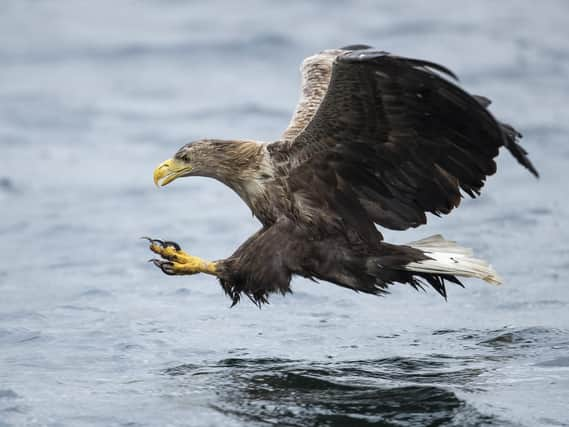The once extinct Sea Eagles back on the North York Moors


The UK’s largest bird of prey was wiped out in the 20th century due to illegal killing but a project by the Roy Dennis Wildlife Foundation and Forestry England has been working to reintroduce them.
A group was released on the Isle of Wight last August and while they remained sedentary over winter, GPS tracking has shown the four young birds are on the move, with two making their way to the North York Moors.
Advertisement
Hide AdAdvertisement
Hide AdDr Tim Mackrill, from the Roy Dennis Wildlife Foundation, said one of the eagles had been present in the North York Moors since April 5, while the second bird was on the moors from April 5-12 before leaving and returning on April 30.
He said in the intervening time the young eagle had flown 650 miles across central and eastern England, returning to the North York Moors from the Peak District.
Dr Mackrill said this sort of flight was typical of young eagles as they learn the landscape, with the satellite transmitters giving an amazing insight into their movements.
The birds are known to explore widely in their first two years before returning to their natural area to breed.
Advertisement
Hide AdAdvertisement
Hide Ad“White-tailed eagles do not breed until they are four or five-years-old,” said Dr Mackrill. “We expect that these birds will move back towards the south coast as they approach breeding age – but for now they are obviously enjoying life in Yorkshire.”
Also known as a sea eagle, the white-tailed eagle has a wingspan of up to 2.5 metres with distinctive wedge shaped tails which – as the name suggests – are white.
Having disappeared from English skies in 1780, it hung on in Scotland until 1918 when the final bird was shot in Shetland.
However they were reintroduced to the west coast of Scotland in the 1970s and more recently the east coast.
Advertisement
Hide AdAdvertisement
Hide AdA generalist predator, it survives in a wide variety of environments and takes fish, birds, mammals and carrion.
There have been concerns voiced by farmers over the reintroduction of the white-tailed eagle with fears raised over the safety of livestock.